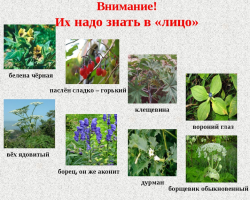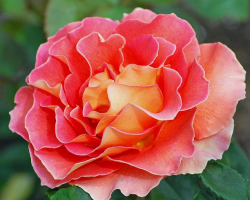If the strawberries are hard and dry, then read the article. There are many tips in it what needs to be done to avoid such a pathology in the future.
Content
- The most common reasons why strawberries are hard and dry berries
- Phytopathology and pests: why will strawberries be solid and dry berries?
- What to do with the affected, dry and hard berries of strawberries?
- How to prevent damage to strawberries in the future: prevention tips
- How to avoid dryness and hardness of strawberries: make fertilizers correctly
- Video: Why do strawberry berries dry on the bushes?
- Video: What about strawberries? Why do berries dry on strawberries?
- Video: Why does many ugly strawberries grow?
Growing strawberries is a very painstaking work. This culture will give a rich crop only if it ensures the optimal conditions for growth. And even the slightest errors in care can lead to problems, one of which is the dryness and hardness of the fruits of the plant.
Read on our website another article on the topic: "Growing strawberries and strawberries from seeds at home". You will learn about the stratification of seeds, planting for seedlings and care, planting seedlings in open ground, dive, feeding fertilizers, country tricks, secrets, agricultural technology, video. Strawberries, strawberries from seeds: when gives a crop?
What serves this cause and how to deal with such a phenomenon? To do this, you need to listen to the advice of experts. Read further.
The most common reasons why strawberries are hard and dry berries

Often problems with a strawberry crop arise under the influence of negative external factors. Moreover, the summer resident himself is in many ways, who could not provide the culture with proper care. Find out the main and most common reasons why strawberries can become dry and solid, and, if possible, do not repeat the mistakes of inexperienced gardeners.
- Insufficient watering
Strawberry is a plant that loves moisture. Do not neglect this, otherwise you will not get a rich harvest, or you yourself will provoke drying the bushes. How to understand that garden culture does not have enough moisture:
- The leaves dry and twist
- The fruits become solid
- The green mass becomes completely yellow or covered with spots, in color similar to rust
And, of course, study the soil under the bushes. If the culture is dehydrated, the earth around it will be dry and possibly covered with cracks.
- Lack of nutrients
Strawberries are rightfully considered an unpretentious garden culture. But this does not mean that she does not need top dressing and fertilizer. Ensuring the intake of nutrients to bushes is one of the most important elements of care. If they neglect them, then this will harm both the most green mass and the fruits of the berry plant.
- Adverse weather conditions
This is the factor that a person cannot affect. But every summer resident, in order to save the strawberry crop, must pay a little more attention to the culture. So, negatively anomalous heat affect the bushes and fruits. It is especially dangerous if the soil begins to actively warm up up to +30 ° C or more. Under such conditions, even regular and plentiful watering will not save: moisture from the soil will evaporate excessively intensively.
Phytopathology and pests: why will strawberries be solid and dry berries?

The dryness and hardness of strawberry berries can be the result of phytopathologies and pests that attacked culture. Most often, provocateurs of such a defect are the following diseases of garden plants.
- Vertikillant withering
This phytopathology can develop in strawberries because of:
- Long -term exposure to high temperatures
- Brush with fertilizers
- Increased soil moisture
- Overly thick location of strawberry bushes to each other and in relation to other garden crops
At the same time, the verticillage wilting belongs to the phytopathologies of the fungal nature. Many other factors can be provocateurs, but strawberries are always manifested by the same signs:
- To begin with, the lower strawberry leaves are affected, after which the infectious process applies to the upper part of the bushes.
- The petioles turn red, and the berries become brown and dry.
- The plant stops its growth and lowers the leaves to the ground.
- The root system gradually begins to die and, as a result, the bush dies.
What to do and how to deal with verticillage wilting? As soon as you notice the first signs of phytopathology, treat strawberry bushes with fungicidal biological product phytosporin. Enough 2-3 tsp. diluted funds in 10 liters of water and conduct spraying or watering for the root of each plant separately. In more serious cases, when the disease is noticeably progressing, you will have to resort to the use of the Bordeaux mixture.
- Root rot
Withering, dryness and hardening of strawberries can be signs of root rot. Already from the name it becomes clear that the ground part of the bushes remains practically untouched. It is possible to understand that culture was struck by this phytopathology only after digging it out of the ground along with the root.
The reason for the development of the disease is an excess of moisture in the soil. It can be the result of regular transfusion of a plant or abundant precipitation combined with a high air temperature. Unfortunately, such phytopathology does not imply any treatment. The affected bushes, on which strawberries became hard, will have to dig and throw it away.
- Trips
Witing strawberries can signal the presence of a parasitic attack on the plant. And they may well become threeps - small insects, which are practically not visible without magnifying glass. After all, the size of the parasite calf barely reaches 1 mm.
Phytopathology can be suspected by changing the color and structure of strawberry berries. They are covered with cracks, become dry, hard. In parallel, a brown coating appears on them, and they are noticeably fading. To combat tripps, drugs from the group of biological insecticides are used:
- Bitoxibacillina
- Fitoverm
- Biwrovert and others.
To completely get rid of tripps, it is necessary to treat strawberries with the chosen drug 3-4 times during the season. Also consider that it is not recommended to use the same tool several times in a row - it must be alternated with other bioinsecticides.
- CHAFER
The larvae of the Khrushchi, as you know, live in the ground and feed on the green mass of plants or root crops. In addition, they are able to eat the root system of garden crops, causing them serious harm. The first sign of damage to the roots is the wilting of the leaves of strawberry bushes.
- The only drug that will help to get rid of the pest independently is insecticide Vallar.
- It must be distributed on the surface of the soil, and then dig to the depth 5-10 cm.
But if you do not want to use the “chemistry” or organics to combat the larvae of the Khrushchi, then during the summer you will have to mulch the beds and install special pest traps. Also do not forget about autumn digging. It is also an effective method of destroying worms that affect strawberries or other garden crops.
- Powder
The powdery mildew initially affects the back of the leaves of strawberry bushes. Therefore, if you do not have a habit of regularly inspecting the plants, turning each leaf over, it will not be easy to notice this parasite.
With a damage to the culture of powdery mildew, the green mass begins to dry. First, this happens along the edges of the leaves - they dry and twist, their growth stops. The berries are deformed, become solid and dry, lose their aroma and acquire an unpleasant taste.
It is worth knowing:Dragged dew most often affects greenhouse strawberries, which lacks nutrients.
To get rid of phytopathology, use fungicidal drugs. If the plant is greatly affected by the disease, then coated areas of green mass will have to be completely removed.
- Fitophthrosis
Leather rot or late blight is a common disease that affects almost any garden cultures. In this case, it is possible to notice its signs, first of all, on the fruits of strawberries. They become dry in the places where they “beat” the phytopher, the rest remains healthy. Phytophal spots have a purple-brown color, so they cannot be noticed.
You can deal with phytopathology using the following drugs:
- Nitrate
- Cuproxat
- Oxich
- Chloros of copper
- Bordeaux mixture
- Ridomil
- Topaz
- Chorus, etc..
If the degree of damage to the bushes is small, you can do with the first four means. But with the spread of infection, you will have to resort to the use of potent fungicides.
- Nematodes
You can understand that strawberries attacked nematodes by the state of leaves. They begin to dry and wither, and then twist, “lie down” on the ground or fall. Infection with parasites does not pass without a trace for fruits. They acquire a dark -skinned shade, as if covered with a grayish raid. The dryness and hardness of the berries is noted.
You can fight with nematodes with the help of professional tools:
- Endocide
- Twix
- Fastak
- Nematodos
- Nematophagin and others
The main groups of drugs used in the infection of strawberries with nematodes are biofungicides and biological insecticides. You need to use them carefully, strictly following the instructions.
What to do with the affected, dry and hard berries of strawberries?

So, the strawberries have become bad, withering and growing badly. It is clear that nothing good will come of it. What to do with the affected, dry and hard berries of strawberries? Here are the tips:
- All fruits that have become unsuitable for use must be collected and thrown away. It will be even better if you bury them in the ground as far as possible from your summer cottage.
- Then cut the leaves from the bushes, including those that are affected very slightly.
- To stop the spread of infection or the reproduction of insects, spray strawberries 1% solution of burgundy mixture.
Dig a row, simultaneously introducing complex mineral fertilizers into the soil.
How to prevent damage to strawberries in the future: prevention tips
To avoid losing strawberry berries from now on, provide culture with proper care and care. How to prevent damage to strawberries in the future? Here are prevention tips:
- Do not forget to regularly water the plant.
This is especially important in hot weather, when moisture intensively evaporates from the ground. During flowering strawberries you need to irrigate 1 time in 3-4 days. For cultures to get enough moisture, calculate it correctly: 20 l per 1 square meter of landings. When the culture goes to the fruiting phase, you can switch to 1 watering per weekbut at the same time take more water - 30 liters per meter square. And if possible, set the drip irrigation of strawberry plantation.
- Protect the bushes from excess light.
Although strawberries are a photophilous plant, nevertheless, you should not be too zealous with it. If the weather is sunny and hot, it is better to shade the culture, using a small net or a non -woven white cloth for this. Especially such protection is needed during the period when the sun is most toxic - from 12 to 17 hours.
- Choose the right strawberry varieties for planting.
If you live in the area with an arid climate, then choose a strawberries variety for the garden that take high temperatures well.
- Mulching the soil.
This is one of the effective ways to protect the roots of plants and in general soil from overheating. The use of mulch will help the culture as steadily withstand the effects of negative external factors.
How to avoid dryness and hardness of strawberries: make fertilizers correctly

Fertilizers should be mentioned separately. Do it right. This is a prerequisite, compliance with which will help prevent the occurrence of many phytopathologies. If you want to avoid the dryness and hardness of strawberries, take a note of a few particularly useful top dressing recipes:
- In equal ratios, mix the pyclast sulfate with sulfate. Additionally, you can add to the mass any complex mineral fertilizer. Apply to each strawberry bush 1 tsp. The resulting mixture and dig, but not very deep.
- Sprinkle with woodfish rows in counting 1 handful dry powder on 1 strawberry bush. Or you can prepare a solution from 1 liter of hot water and 1 cup ash. Stir this mixture thoroughly, combine with 10 l clean water and use a solution for watering plants. Dosage - 1 liter funds per 1 bush.
During fruiting, it is useful to feed strawberries with nettle infusion:
- Take the branches and leaves of the nettles, until the seeds have begun to appear, chop it with a knife or blender and put in a bucket.
- The raw materials should occupy 2/3 of all free space in Tara.
- Pour it with water to the very edges and put it in a warm place for fermentation. This process will take from several days to a week - it all depends on the air temperature on the street or in the room where the container costs.
- When the infusion is ready for use, it will darken, and bubbles will cease to appear on its surface.
- Now it remains to dilute the infusion with clean water in the proportion 1:10 Accordingly, and it can be used to process strawberries.
- One bush has to 1-1.5 biological product.
A good method for the prevention of diseases that lead to damage to strawberry berries is regular cleaning of the beds. It is necessary to manipulate in early spring, immediately after the snow is melted. Remove all the garbage from strawberry plantation, tear out last year's weed herbs. Carefully inspect each bush, and if there are defective leaves on it, cut them right away.
Advice: After the end of garden work, spray the plants 2-3% solution of burgundy fluid. Then wait until the earth dries up, and conduct loosening. The final stage is the powdering of the worked out soil areas humus.
Such procedures help strengthen plant immunity and protect them from fungal infections and invasions of parasites. It is recommended to perform them regularly, and not when you have already encountered the problems of wilting and hardening of strawberry berries. After all, prevention is much better and more effective than the fight against phytopathology, and every experienced summer resident knows about this. Good luck!
Video: Why do strawberry berries dry on the bushes?
Video: What about strawberries? Why do berries dry on strawberries?
Video: Why does many ugly strawberries grow?
Read on the topic:
- Is it necessary to break the mustache from strawberries during flowering, fruiting?
- How to distinguish a women's strawberry bush from male: Purpose of determination
- Strawberry and garden strawberries, description of diseases
- Growing strawberries and strawberries in PVC pipes vertically and horizontally
- Transplanting and propagation of strawberries and strawberries of a garden division of a bush







